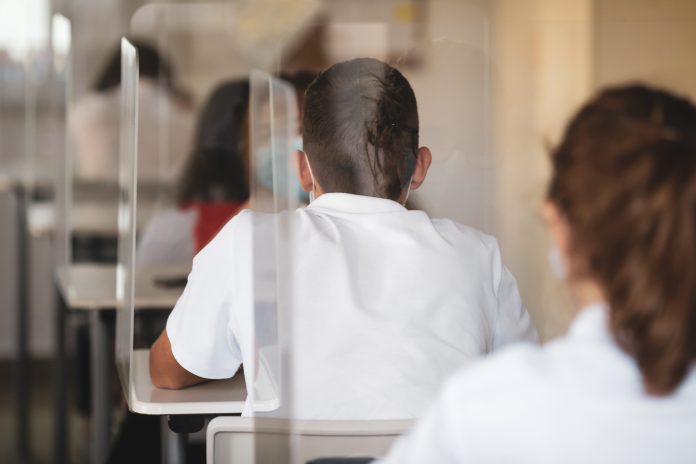Researchers developed a simulation model for schools during the pandemic, identifying what schools need to do to minimise COVID cases
Austrian scientists have developed a simulation model for keeping schools open safely during a pandemic, showing how likely the virus spreads in different school settings.
To gain an idea of what measures could realistically be implemented in schools, the researchers conducted several interviews with school principals and teachers, with its “school tool” taking data on 616 corona clusters that had occurred in Austrian schools in the fall of 2020.
The research finds that the best measures to stop the spread are ventilation and rapid antigen testing on the regular.
Calculating the effectiveness of measures against virus spread
Researched by the CSH and MedUni Vienna and Graz University of Technology, the scientists added the properties of the delta variant, which was predominant in Austria before Christmas.
In the first step of the development process, the scientists defined different types of schools: How many classes does a school have, how big are the classes, how many teachers are there at the school, and more.
Complexity scientist Jana Lasser, the first author of the paper, said: “In our model, we distinguish primary schools with or without afternoon daycare, lower secondary schools with or without afternoon daycare, upper secondary schools, or secondary schools with children from 10 to about 18 years.”
The virtual schools developed could take different measures to prevent clusters when possible. The measures highlighted included: wearing masks, a frequent intensive ventilation of classrooms, the regular testing of children and teachers, and class size reduction. The scientists also simulated different vaccination rates among teachers and children.
Lasser added: “However, we can adapt our model any time and simulate a wide variety of other scenarios.
“Secondary schools tend to be larger, with more children in the classes and changing teachers, so there are significantly more opportunities for infection spread. The web-based visualization we also developed shows nicely how an infection runs through a school.”
A result of the work was that the measures had to be adapted to different school types. For instance, with a higher likelihood of contagion in larger schools, the model would require implementing more measures than elementary schools.
Adapting the model to suit realistic scenarios
With around 80% of the teachers vaccinated, the model shows that elementary and lower secondary schools can keep the reproduction rate R below 1 (for instance, if one sick person infects less than one other person on average) with classroom ventilation, wearing masks, and class size reduction even when children are not vaccinated.
With additional regards to the Delta variant also, in all other types of schools, the same measures can help to keep R<1 – and thus reopen relatively safely, as long as at least half of the children are also vaccinated.
In larger schools, testing also focuses on teachers as a possible source of infection, since they have many more contacts throughout the day and can carry the virus to different classes.
Out of all the individual interventions – except for vaccination – the ventilation of classrooms has been pointed out to be the most effective in preventing a cluster. This is given as long as windows are consequently opened for five minutes every 45 minutes.
Another highly effective measure highlighted was testing two to three times a week, the scientists modelled antigen testing for this study.
Complexity scientist Peter Klimek of CSH & MedUni Vienna, added: “We clearly see the effectiveness of the so-called Swiss cheese model. No single measure alone can protect one hundred percent, but with several measures combined, protection increases considerably.
“In addition, the correct implementation of measures is the be-all and end-all. Even a small deviation – for example, if classes are ventilated less frequently or not all children are getting tested – is enough to make cluster sizes grow exponentially.”
What about the Omicron variant?
Lasser explained that the Omicron variant had also been considered in the findings: “On the occasion of the publication of our paper, I wanted to check that, too. My results, although of course not yet peer-reviewed, show that due to the much higher infectiousness of Omicron, we need all available measures in all types of schools to prevent larger outbreaks.
“Only elementary schools can omit one measure, such as splitting classes.”
Emphasising the value of a well-done visualisation of the model as an aid for parents, children, school leaders or authorities, the researchers recommend this method for all schools to prevent the immense spread of coronavirus, as seen across Europe.
Lasser further said: “It is always impressive to see how quickly a virus spreads in a group, and how infection dynamics change when single or multiple measures are introduced. Good visualizations could do a great deal of persuasion.”











